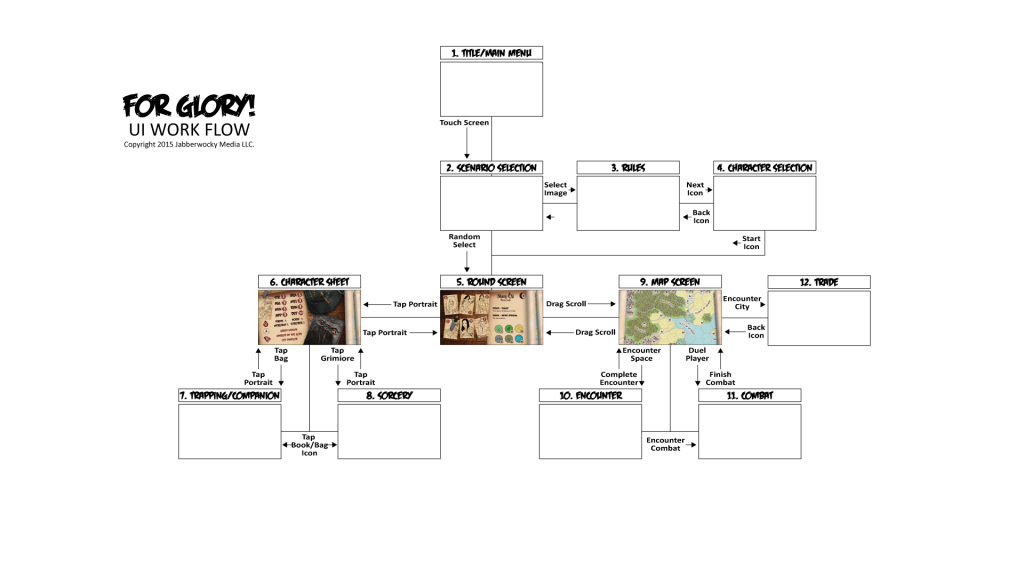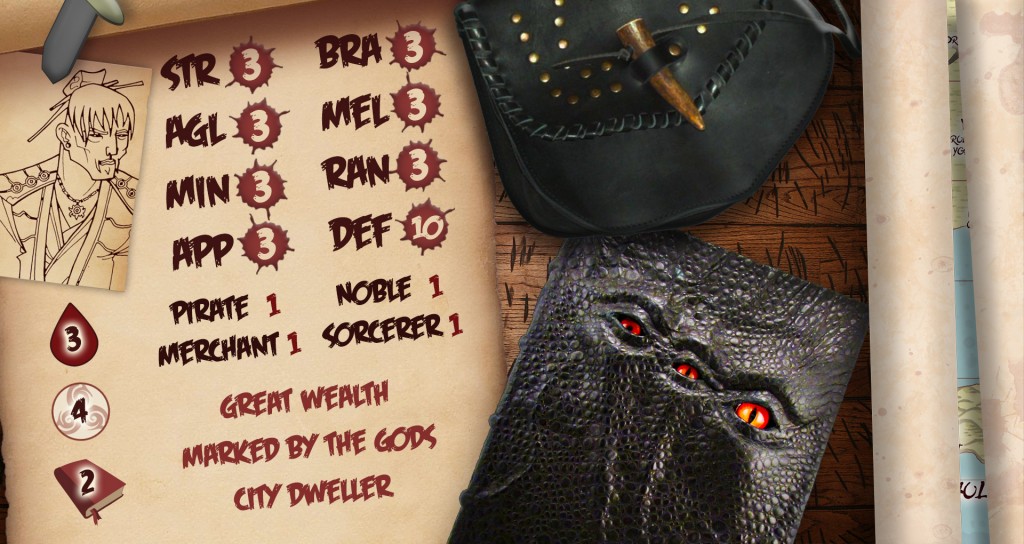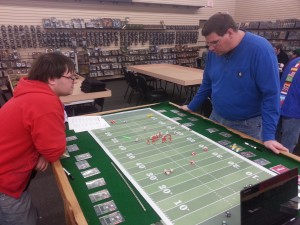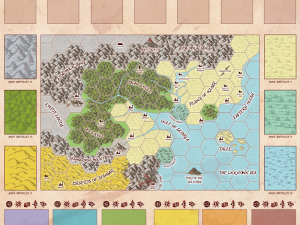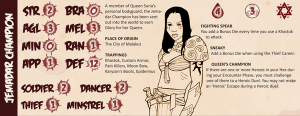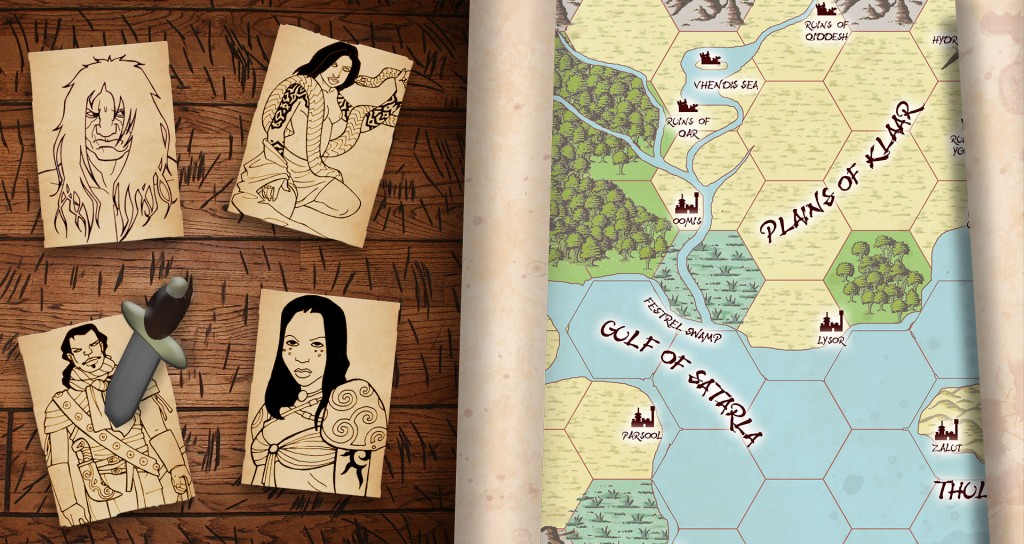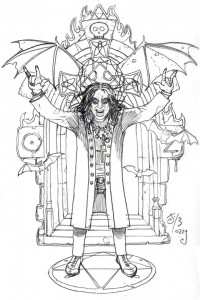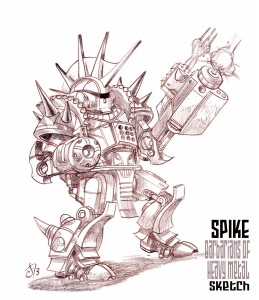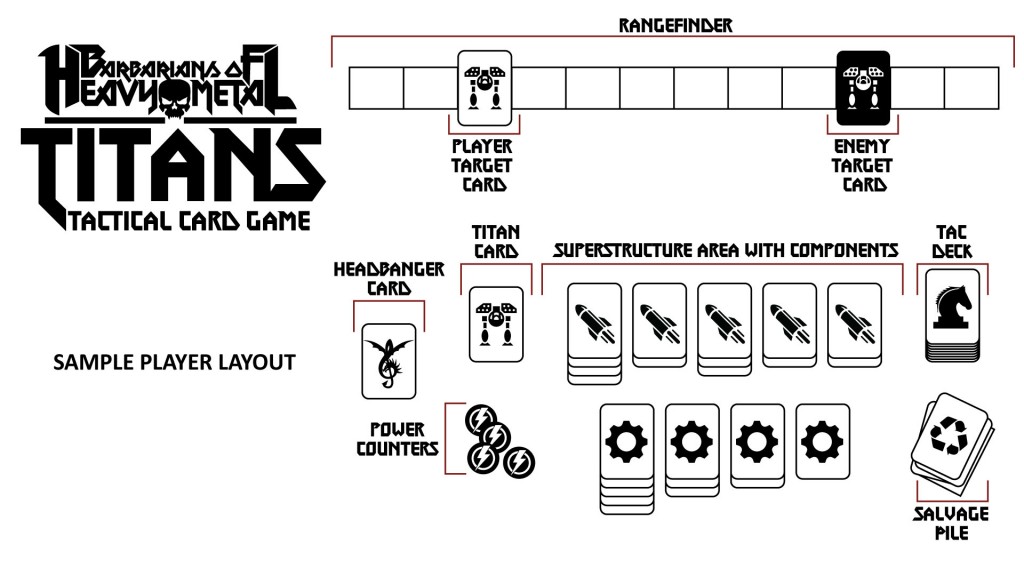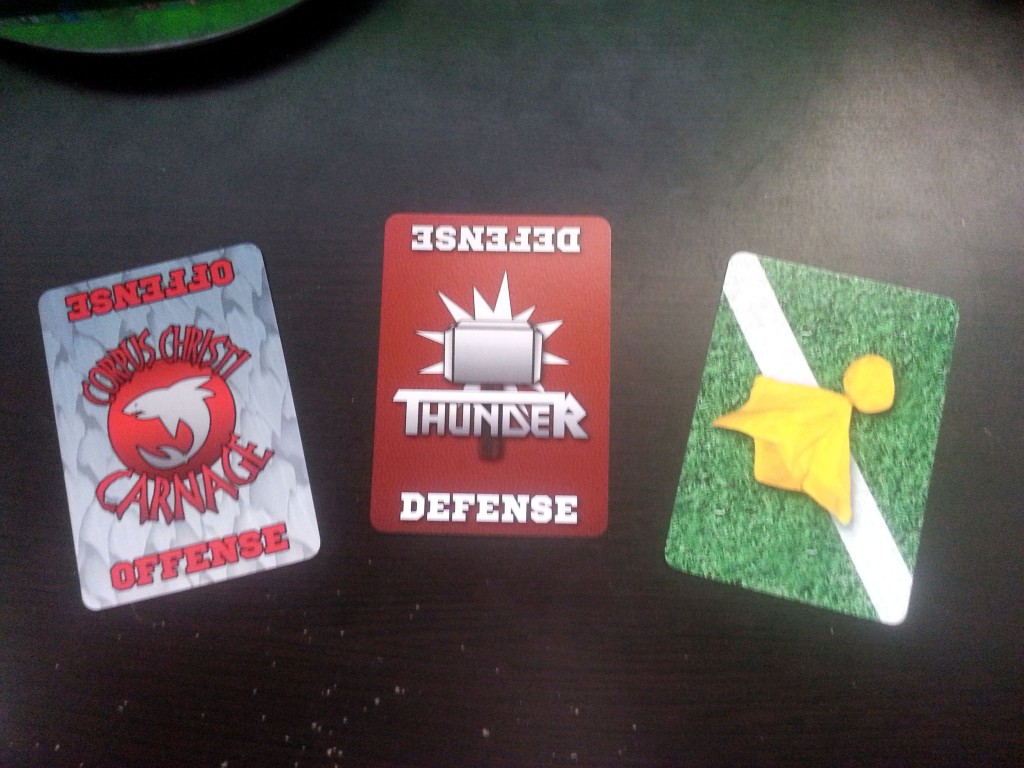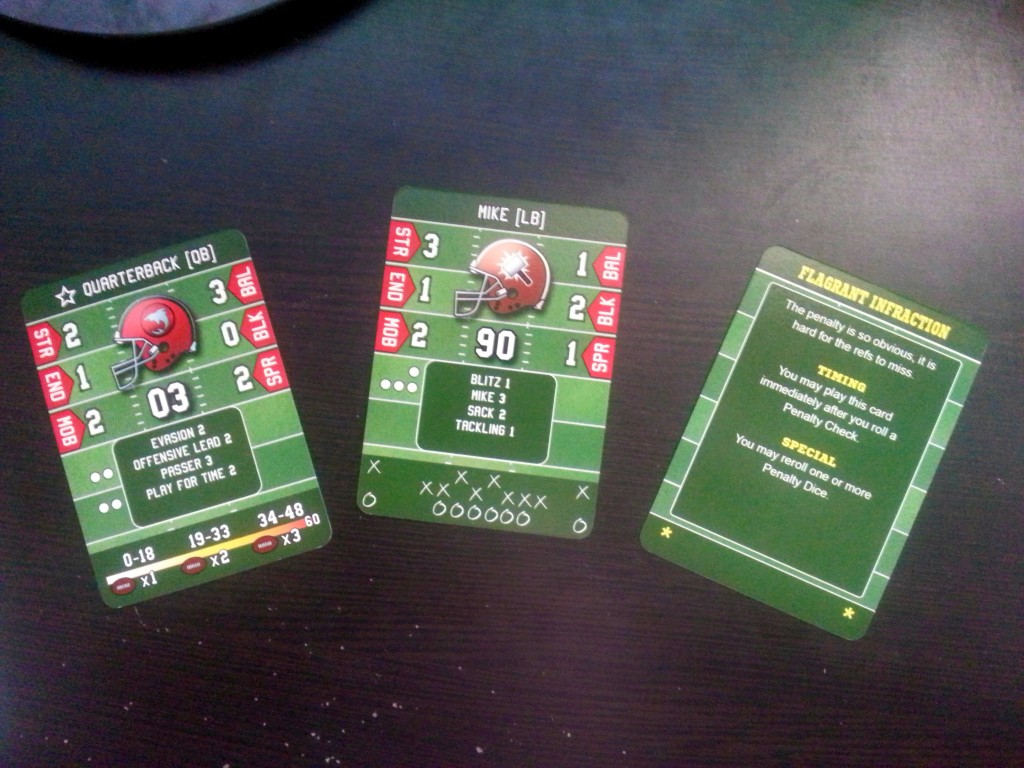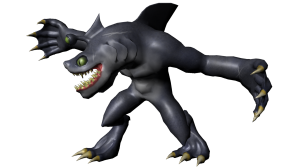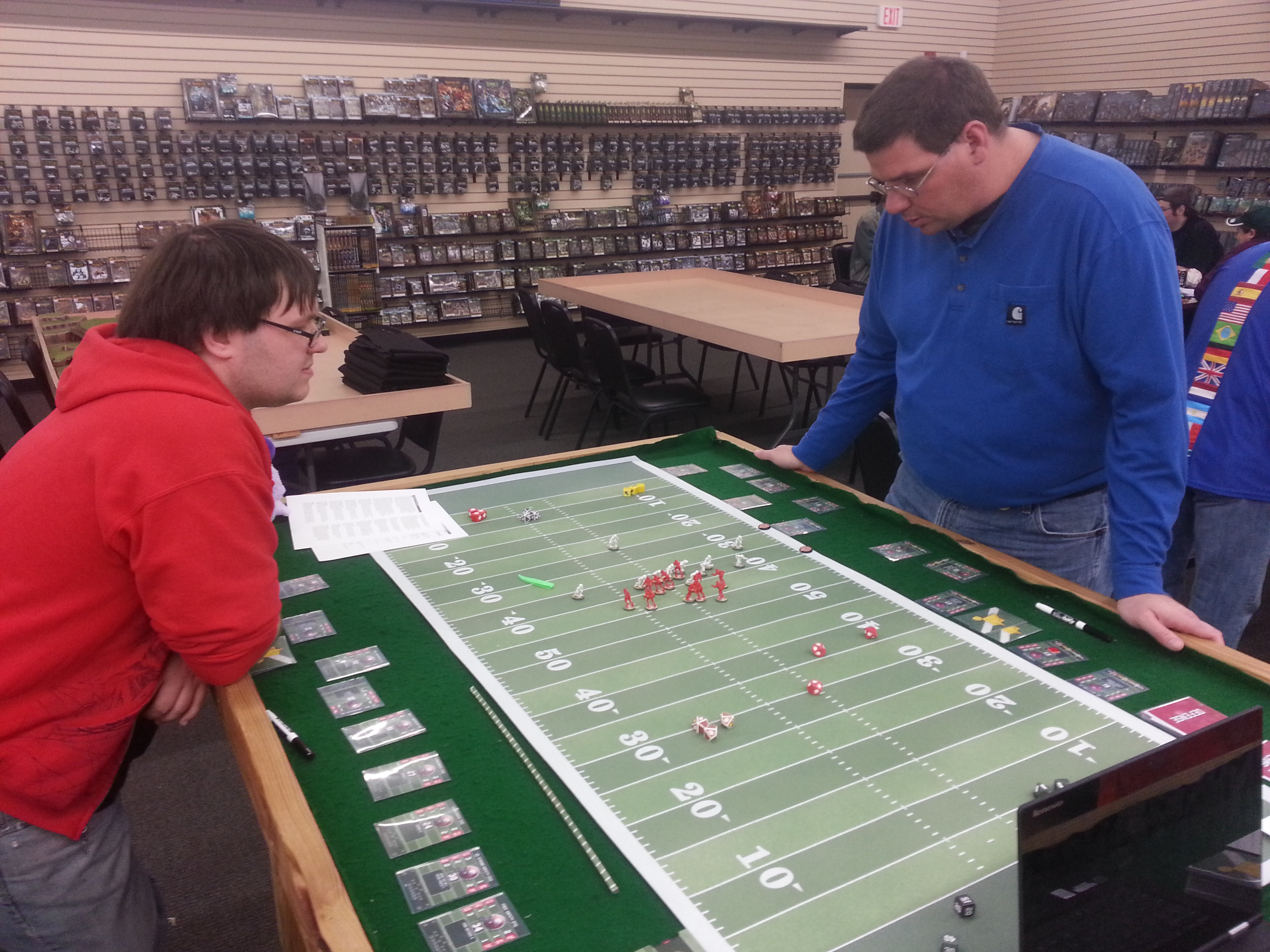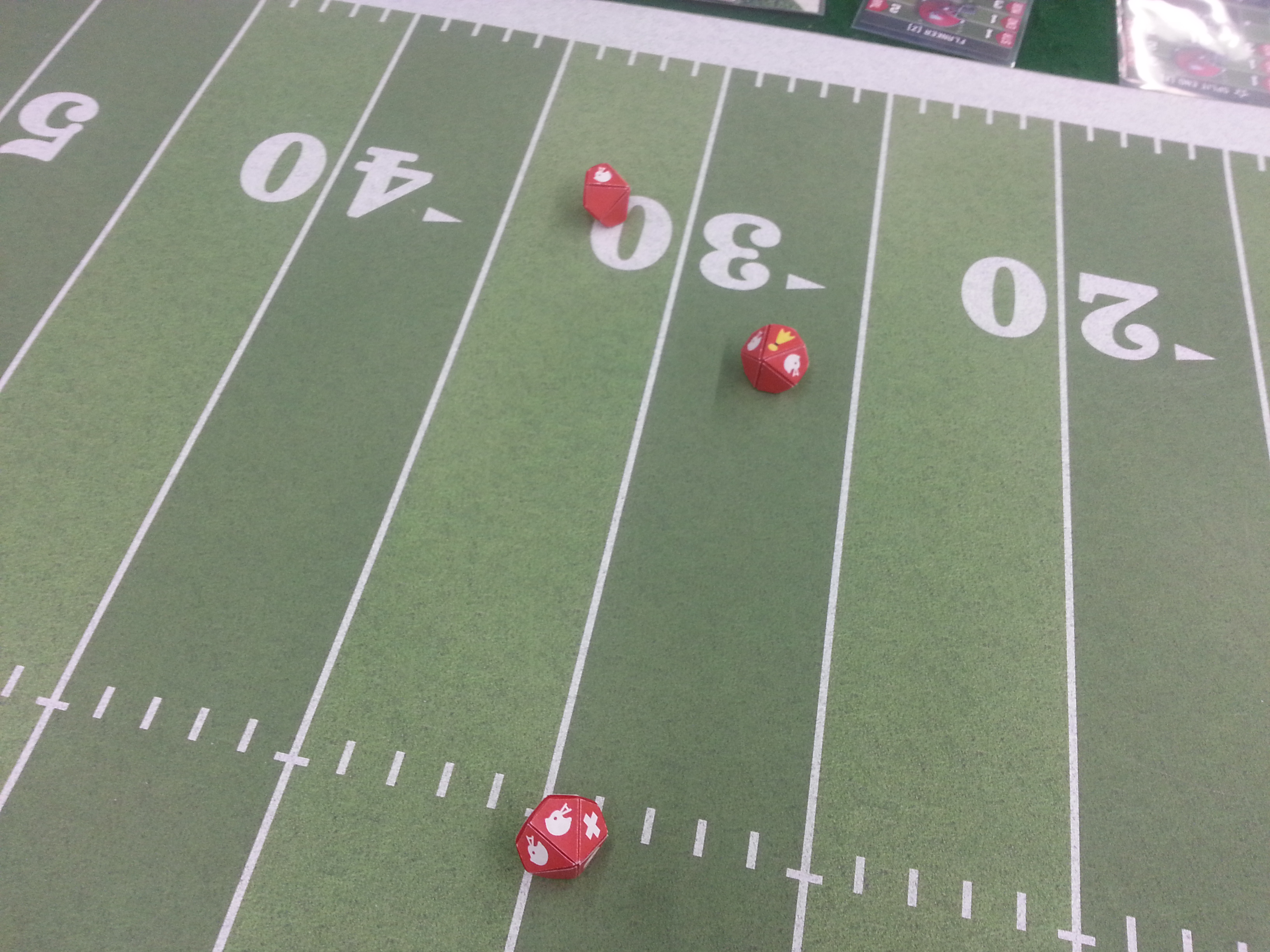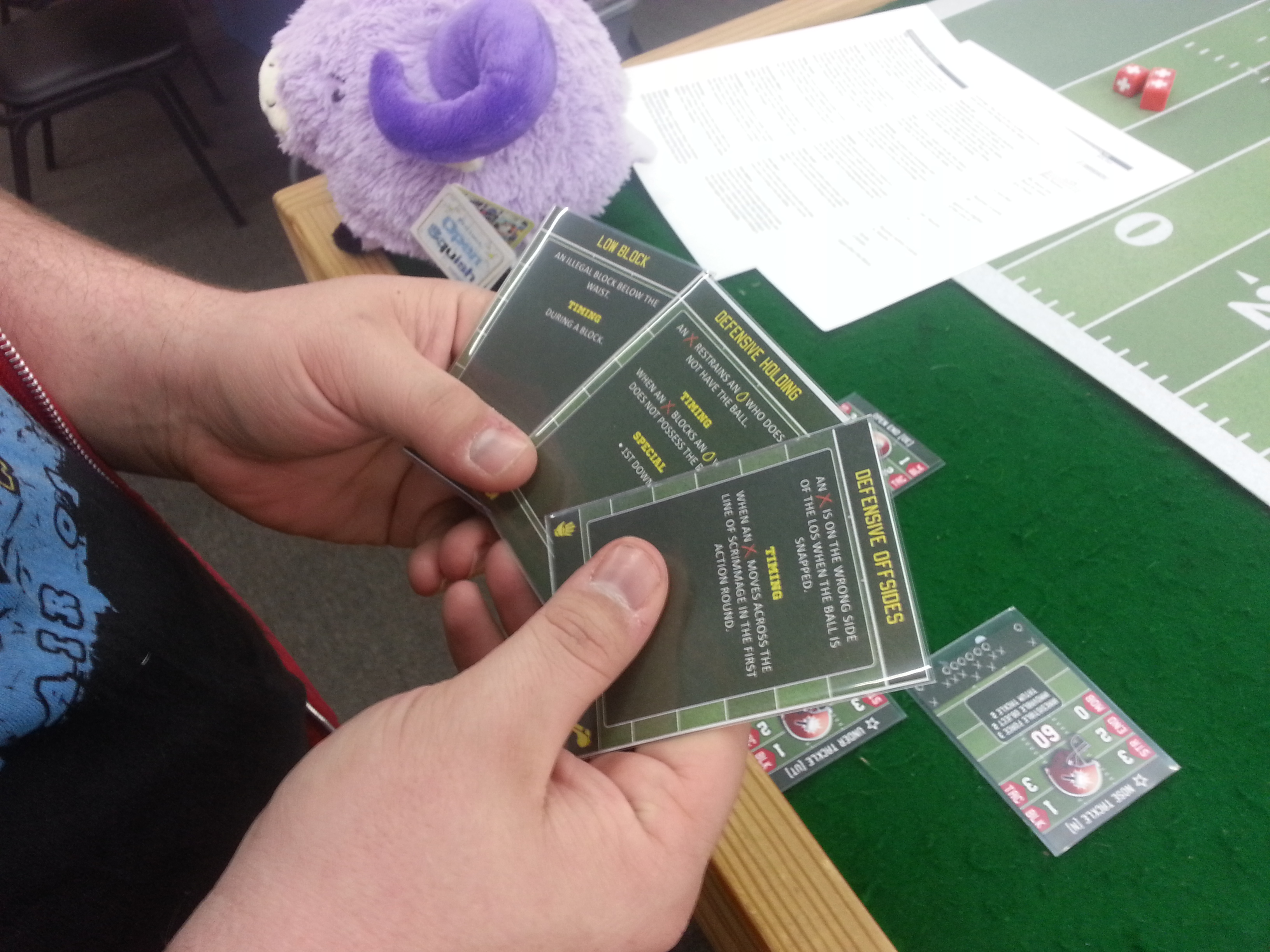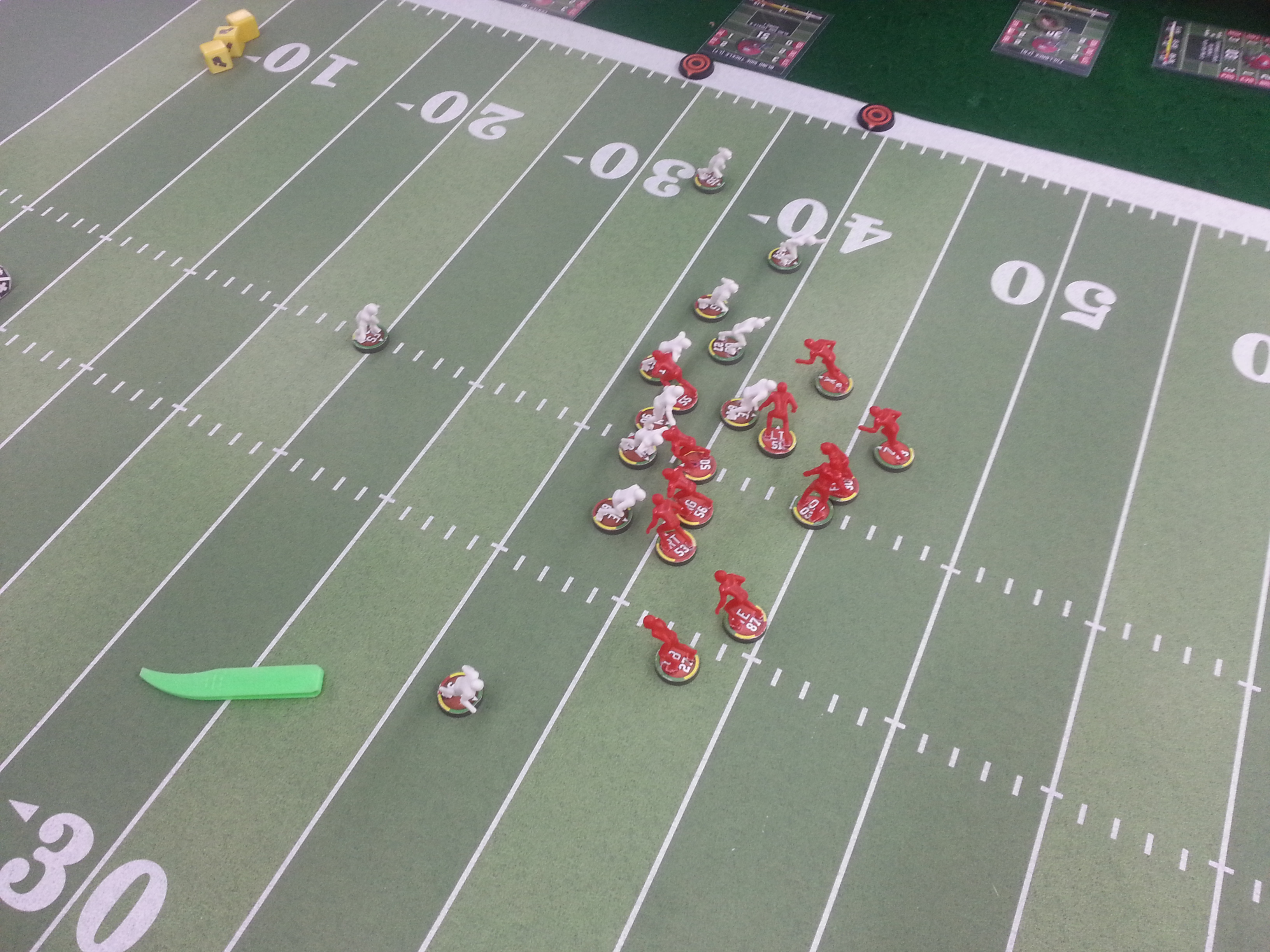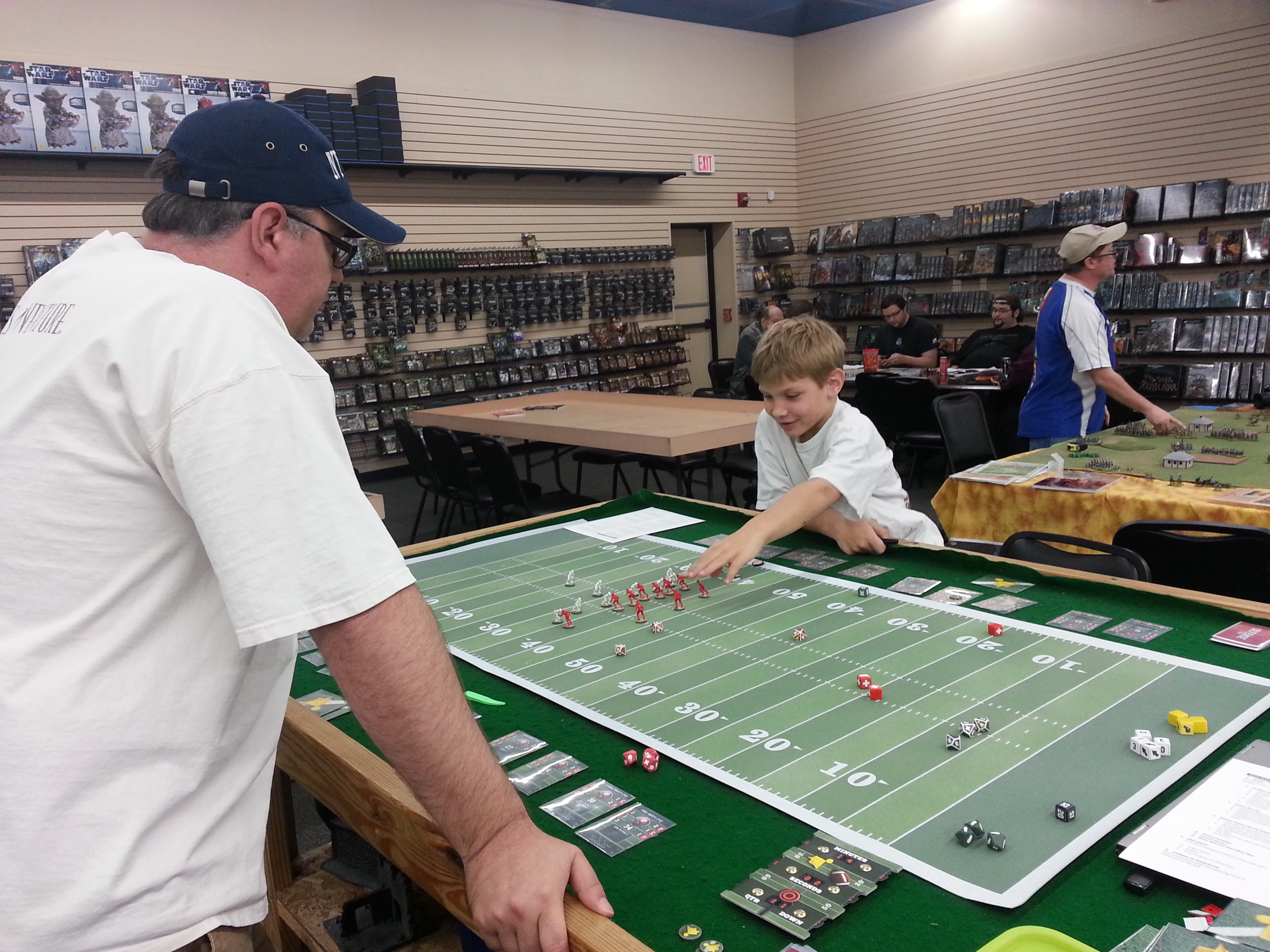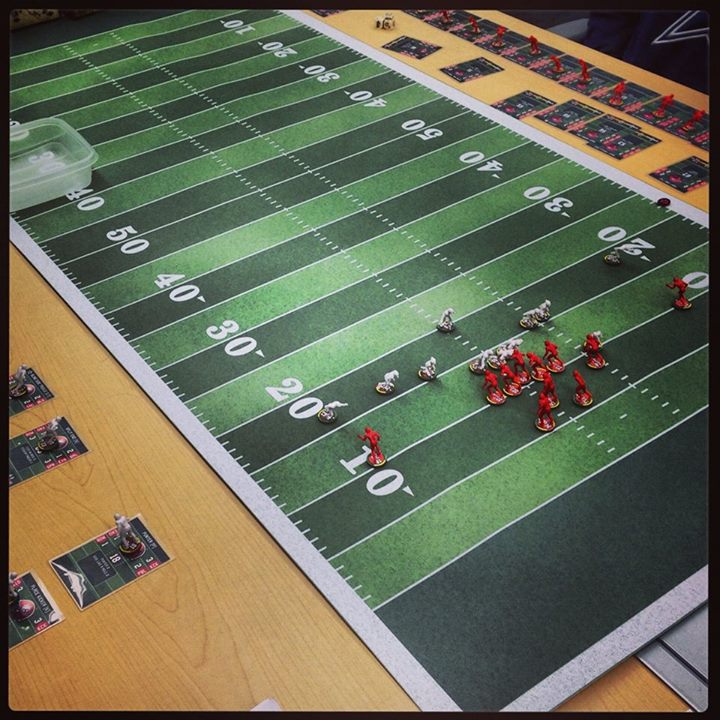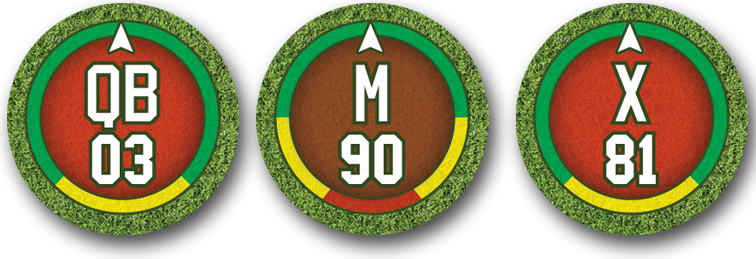So my academic work from the previous post is all geared towards graduating in December, but a man (and his family) gotta eat, and that means making stuff to sell. In my case, that means more games.
I have three games that fall into this category, but only one of them is actually going to get any attention before next year, considering my rather hefty workload.
BATTLE BLOCKS
I’ve always loved wargames. Moving massed armies around a board and trying to go all Sun Tzu on your opponents backside is a hobby that has consumed a good 3 decades of my life. And up until about 6 years ago, I enjoyed the other aspects of the wargaming hobby that I now have absolutely no time for: building and painting the models and scenery that made such battles possible.
More recently though, it is nigh impossible for me to really enjoy that hobby anymore and, like many guys my age, I’m always looking for options to ply a good table-top wargame (particularly my favorites, Warmaster Ancients and De Bellis Antiquitatis, for which these base sizes are perfect) without having to invest the time and money in hundreds of models. that’s when it struck me to come up with that option.

A selection of unit labels for Greek Battle Blocks (all images © 2013 Jabberwocky Media)
Enter Battle Blocks. Basically I found that if you take a 40mmx20mmx6mm wooden block and plop a sticker down on it to give you a general idea of what sort of unit it represents, you not only can cheaply create a number of armies for testing out strategies or mixing up forces (which is particularly good for Historical Wargaming where the armies tend to be grouped rather tightly by era) but the look and feel of the blocks moving along a
map recreates the mood of ancient generals controlling their forces from a tent on the back of the line. Very thematic. And they work for any ancients type game because unit composition is fairly standard. This for instance:
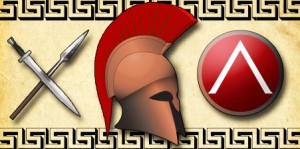
Hoplites (© 2013 Jabberwocky Media)
A standard greek hoplite armed with spear, sword, shield and light armor. The shield shows a unit insignia so that you can group blocks appropriately (in Warmaster Ancients, for instance, a unit will be comprised of three such blocks) or so you can
show army affiliation in the case of grand strategic games like DBA (the above would represent a Spartan Hoplite and, no, I’m not yelling that out).
I’ve got a full batch of Greeks done up and I’m working on the Persians off and on (trying to draw cool looking Persian headgear that reads well at this size is a bit of a challenge) and I’ll likely try and get these out as a PDF sometime in January or February (after the Super Bowl). No Kickstarter, just a PDF that folks can buy and print out on sticker paper with instructions for constructing the blocks, and possible an easy set of quick-play wargames rules to go with them.
VOID HUNTERS: THE DCC GAME OF SEVENTIES SCIENCE FICTION
I do play games at least once a week. I have no business being a game designer if I’m not willing to make the time to do that. And I’m not talking about my own stuff, but other people’s games. It’s good for clearing the ol’ mental palette.
One of the games I’ve been playing is Dungeon Crawl Classics, which is a fantasy game with a strong 1970’s vibe. You heard me jive turkey! I’m gaming like it’s 1974 and I’m lovin’ it!
Well, since I can pretty much write an RPG in my sleep, and DCC is so popular at the moment, I figured I’d create a sci-fi version of it and, after discussions with Joseph Goodman and signing a licensing agreement, I’m going to start work on Void Hunters, the DCC game of Seventies Science Fiction in November, while my For Glory! Kickstarter is rolling, with a Kickstarter to follow in the Spring of 14.
The default setting is focused on the horrors of space exploration, including isolation, alien terrors, and weird quirks of science and nature that defy man’s understanding of the universe. The rules will follow closely in the gritty mold of DCC and reinforce the notion that space is a cold, lonely, uncaring thing that will kill the unprepared, and, when faced with an infinite variety of things that can kill you, it’s practically impossible to be totally prepared.
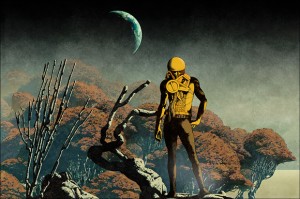
Adventures would largely be based around sandbox style exploration of the universe, discovering the remains of other civilizations that died out long before man took his first steps into the universe, fighting against alien super-predators that are bred in the darkest and harshest environments, and salvaging the remains of lost expeditions that fell prey to unknown forces or the predations of their fellow men. Basically, DCC In Spaaace! But there will information for setting up Feudal Dark Sci-Fi settings (like Dune or 40k) and War Amongst the Stars settings (like Ender’s Game or Starship Troopers). Here is a list of the game’s major influences…
BOOKS
All the Stars a Stage (James Blish, 1971) – The imminent destruction of the sun forces humanity (now a matriarchal society in which men are considered largely useless) to flee for the stars in untested starships. Over 50 years of dangerous exploration to find a suitable homeworld ensue.
Dune (Frank Herbert, 1965) – The prime example of the Feudal Sci-Fi setting, the universal order has regressed into a series of interstellar Dukedoms ruled over by an Emperor; space travel and psionic disciplines along with human computer/assassins are controlled by guilds; and Machiavellian schemes, political assassination and interstellar war are the primary past-times of the noble houses.
Ender’s Game (Orson Scott Card, 1985) – Although the full novel came out in 1985, the basis for it appeared as a novella in Analog magazine in 1977. Mankind, still recovering after a narrowly won war against an implacably alien insect race known as ‘the buggers,’ starts training the next generation of children to become generals and launch a pre-emptive strike against the aliens before they can regroup and return to finish humanity off.
Gateway (Fredrick Pohl, 1977) – The core premise of this story, an ancient and long dead alien race leave behind a stargate and several hundred ships for humanity to discover and experiment with, would make an excellent setup for a Void Hunter’s campaign. The fact that the poor humans have little control over where they are going (Habitable world? Dead world? Edge of a black hole?) and when they might get there (Do we have enough supplies to last the trip or will we starve in space?) just makes it all the more fun. Throw in a 1849 era gold-rush mentality as people risk it all for a chance to get rich off the unknown, and a greedy corporation looking to exploit them when/if they return, and you’ve got the perfect recipe for adventure.
Rendezvous with Rama (Arthur C. Clarke, 1972) – The subject of this novel is another space born artifact from a long lost alien civilization, which would qualify as an extremely unusual hulk: part space craft, part world. The ‘biots’ also make for highly interesting alien fauna.
Ringworld (Larry Niven, 1970) – Louis Wu and company crash land on the mother of ancient archeological artifacts, a Ringworld, and are forced to explore it’s massive, bizarre structure in order to find a way to escape. While not all that dark, and featuring a number of different alien races, Ringworld does provide a perfect example of exploring the remains of a lost alien civilization while interacting with the retro-grade descendents and strange creatures that make up the flora a fauna around it. It is a massive, campaign worthy, sci-fi sandbox.
Starship Troopers (Robert Heinlein, 1959) – For more military based campaigns, there isn’t a great deal of combat in the book, but there is a great deal on the no holds barred, anything to survive mentality humanity may adopt in order to cope with the extreme circumstances surrounding interstellar war. Brutal training for a brutal people to fight a brutal enemy in a variety of brutal environments..
Solaris (Stanisław Lem, 1970) – The perfect example of what happens when man inadvertently discovers that life doesn’t neatly fit in the pigeonhole that he places it in, and the consequences that emerge from that arrogant assumption. I won’t give away the core story element that makes this novel unique, but suffice to say, sometimes the observer doesn’t realize that they’re the one under the microscope.
Warhammer 40k Rogue Trader (Rick Preistley, 1987) – Although a game book, not strictly straight fiction, the first edition of the world-popular WH40k game set forth a dark interstellar empire in its decline, its teaming subjects living a feudal existence underneath a brutal regime venerating a corpse Emperor and beset by external enemies and internal corruption. The original is still the best and presents humanity and space as terrifyingly uncaring and full of black humor. It also provides a ton of story seeds revolving around the exploration of new worlds, the rediscovery of lost worlds and salvaging of massive ‘space hulks,’ essentially mega-dungeons in space.
MOVIES
 Alien (1979) – A crew of space miners, ordered by the Company to investigate a signal coming from a mysterious moon, end up exploring a dangerous world, encountering the crashed hulk of an alien spaceship and bring aboard a parasitic alien life form that stalks the crew in the ‘dungeon’ of their own spacecraft. This is the quintessential Void Hunter adventure in the Dark Sci-Fi paradigm.
Alien (1979) – A crew of space miners, ordered by the Company to investigate a signal coming from a mysterious moon, end up exploring a dangerous world, encountering the crashed hulk of an alien spaceship and bring aboard a parasitic alien life form that stalks the crew in the ‘dungeon’ of their own spacecraft. This is the quintessential Void Hunter adventure in the Dark Sci-Fi paradigm.
The Black Hole (1979) – No aliens, space demons or lost civilizations, just a mad scientist in a massive ‘lost’ space ship (the sci-fi equivalent of an evil wizard’s dungeon complete with the robot equivalent of orcs and an ogre) perched on the edge of the most destructive force in the universe with all the danger that entails.
Dark Star (1974) –Somewhat less serious than some might expect from the title, the comedy is still black as the void of space, the end result of the film is fairly fatalistic and the clear insanity of the crew after a long space voyage (not to mention the dark nature of their ongoing mission) is likely to remind players and GMs of the black humor and absurdity that even the most well meaning and serious RPG adventure devolves into after a long night’s play. It’s like somebody took an actual sci-fi RPG session, wrote it into a screenplay and then filmed the results.
Event Horizon (1997) –This movie came out well after the seventies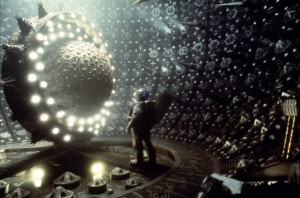 , but it encapsulates the horrors of space exploration and turns them up to 11. A search and rescue team finds a spacecraft with a prototype interstellar drive that went missing 7 years earlier. As they explore the ‘hulk’ they find that, on its maiden voyage, the Event Horizon uncovered horrors beyond human comprehension. It’s ‘The Shining’ in space with a little bit of ‘Hellraiser’ thrown in for good measure.
, but it encapsulates the horrors of space exploration and turns them up to 11. A search and rescue team finds a spacecraft with a prototype interstellar drive that went missing 7 years earlier. As they explore the ‘hulk’ they find that, on its maiden voyage, the Event Horizon uncovered horrors beyond human comprehension. It’s ‘The Shining’ in space with a little bit of ‘Hellraiser’ thrown in for good measure.
Outland (1981) – Again, shortly outside of the seventies, but still deep in the ethos of many of the stories from that time. No aliens, just man’s inhumanity to man in the pursuit of interstellar resources and profit. Often described as ‘High Noon in Space,’ nothing better captures the frontier nature of space, where help is not around the corner and running away is not always an option when you’re surrounded by an environment that is totally antithetical to human life.
Silent Running (1972) – While this film is set within the solar system, it has many elements that define seventies sci-fi. Man’s inhumanity and self-destructive nature, the delicate nature of life and maintaining it in the cold dark of space, and a perfect example of how some last remnant of a lost civilization could end up floating in space (becoming a Hulk, in VH vernacular).
MAGAZINES
A lot of the science fiction I read that really defined the themes of seventies science fiction came from a selection of magazines that were popular during that decade and into the eighties as well. I can’t necessarily remember the specific stories or the particular authors, but the influence of these periodicals, whose stories reflected the time they were written in, will impress the feel of the era on you like nothing else can.
Omni – A magizine of technology, science and science fiction, it boasted articles featuring some of the most influential writers, scientists and artists of the time, including Carl Sagan, Isaac Asimov, and H.R.Giger. The stories were a bit on the weird side. One story that sticks in my brain to this day involved an alien shape changer that absorbed people to feed itself and then took on their form and memories. It ha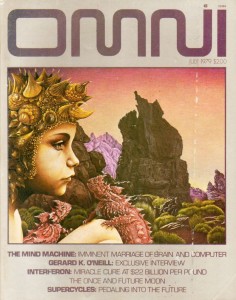 d escaped from a government black site and became the lover of a woman who took it in after she found out it had eaten and taken the form of her ex-husband. She basically kept it as a lover until she started to think it might leave her, at which point she turned it over to the government, stoned out of its mind on oregano, which acted as a powerful and addictive drug for it. Yeah, that’s the kind of weird stuff the seventies was known for…
d escaped from a government black site and became the lover of a woman who took it in after she found out it had eaten and taken the form of her ex-husband. She basically kept it as a lover until she started to think it might leave her, at which point she turned it over to the government, stoned out of its mind on oregano, which acted as a powerful and addictive drug for it. Yeah, that’s the kind of weird stuff the seventies was known for…
Analog – The premier science fiction magazine of the time, it collected the works of authors known and unknown and many of its stories really reflected the zeitgeist of the time, one of uncertainty and fear of the unknown. Find yourself a dozen or so back copies form this period and you’ll probably have enough material for an equal number of adventures.
OTHER STUFF
There are a ton of other ideas fighting for space in my head, but one of the things I’ve sussed out in grad school is my working limitations. I can handle about three things at any one time (although I have reams of ideas noted down for future development). At the moment, For Glory!, Quarterback Blitz and Void Hunters are what I’m splitting my time between, with all of them in various stages of completion, slowly rolling off the assembly line of my mind one after the other. Once I graduate, I’m going to have to assign one of those three slots to non-gaming work (most likely teaching) so my production will slow down a bit, but I can comfortably conceive of releasing two or three things a year (especially if I get summers off). Hopefully, those initial three will establish Jabberwocky Media as a top-notch game company and firmly establish my vocation as professional Game Designer…
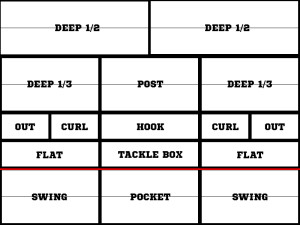 The board is now split into irregular areas that reflect how the offense mentally identifies the field. This makes plays easier to design and also helps to reduce the number of movement related skills.
The board is now split into irregular areas that reflect how the offense mentally identifies the field. This makes plays easier to design and also helps to reduce the number of movement related skills.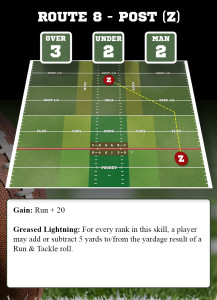 defensive cards that focus on particular parts of the play sequence and certain areas of the field. A coach’s hand will consist of a number of cards (7 on average) which can include a combination of Play cards (routes, defensive structures, etc. as seen on the right) and Action Cards (special events and skill usage).
defensive cards that focus on particular parts of the play sequence and certain areas of the field. A coach’s hand will consist of a number of cards (7 on average) which can include a combination of Play cards (routes, defensive structures, etc. as seen on the right) and Action Cards (special events and skill usage).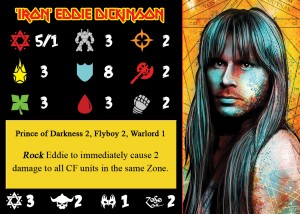 This is actually pretty close to done. In play-testing, the mechanics seem to work extremely well at recreating miniature wargaming with cards.
This is actually pretty close to done. In play-testing, the mechanics seem to work extremely well at recreating miniature wargaming with cards.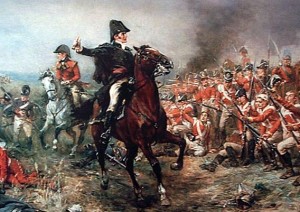 Just before finishing Bone Orchard, I went off table top RPGs and hung up my hat as a designer in that area. The customer base was too segmented and the profit to cost ratio was poor, but mostly, I just didn’t enjoy it anymore. It might have helped if there was a subject that really grabbed my attention and hadn’t been thoroughly explored yet, or if the RPG market was even slightly interested in any of my more outlandish and niche projects like BoHM.
Just before finishing Bone Orchard, I went off table top RPGs and hung up my hat as a designer in that area. The customer base was too segmented and the profit to cost ratio was poor, but mostly, I just didn’t enjoy it anymore. It might have helped if there was a subject that really grabbed my attention and hadn’t been thoroughly explored yet, or if the RPG market was even slightly interested in any of my more outlandish and niche projects like BoHM.
